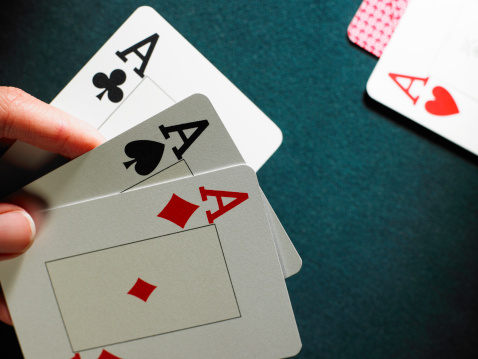What Does Counting Cards Mean

Card counters keep track of this ratio, and when the remaining unplayed cards contain a disproportionate number of big cards, they will increase their bets. Therefore, if the casino suspects a player is card counting, they will look for this bet variation. Since many players vary their bets for reasons other than card counting (e.g., using a. People think that the main ways to make more money at card counting are to bet more and to play games with better rules. Did you know that you can add much more value by finding a game with 10% better penetration than by betting 10% more on high counts. Let’s say you’re using a 1-10 bet spread. The concept of counting cards is simple. Each rank of card is assigned a point value, and the card counter adds or subtracts those points to get a “running count” to determine if the deck is positive or negative. There are many different card counting systems used by the players. In Blackjack, it is favorable to the player when there are more Aces and 10 Value Cards (10’s, Jacks, Queens, and Kings) remaining in the shoe. So card counting is simply using a system to keep track of the ratio of low cards to high cards. Step 1: Assign A Value To Every Card.
Pips are small but easily countable items, such as the dots on dominoes and dice, or the symbols on a playing card that denote its suit and value.
Dice[edit]


On dice, pips are small dots on each face of a common six-sided die. These pips are typically arranged in patterns denoting the numbers one through six. The sum of opposing faces traditionally adds up to seven. Pips are commonly colored black on white or yellow dice, and white on dice of other colors, although colored pips on white/yellow dice are not uncommon; Asian dice often have an enlarged red single pip for the 'one' face, while the dice for the game Kismet feature black pips for 1 and 6, red pips for 2 and 5, and green pips for 3 and 4.
Dominoes[edit]
Dominoes use pips that are similar to dice. Each half of a domino tile can have anywhere from no pips all the way up to six or nine pips (depending on countries) arranged in the same manner to dice pips. Regardless of dominoes having up to six or up to nine pips on one half of the tile, the game is generally played for up to four players only, individually or in partners (pairs).
Playing cards[edit]
In playing cards, pips are small symbols on the front side of the cards that determine the suit of the card and its rank. For example, a standard 52-card deck consists of four suits of thirteen cards each: spades, hearts, clubs, and diamonds. Each suit contains three face cards – the jack, queen, and king. The remaining ten cards are called pip cards and are numbered from one to ten. (The 'one' is almost always changed to 'ace' and often is the highest card in many games, followed by the face cards.) Each pip card consists of an encoding in the top left-hand corner (and, because the card is also inverted upon itself, the lower right-hand corner) which tells the card-holder the value of the card. In Europe, it is more common to have corner indices on all four corners which lets left-handed players fan their cards more comfortably. The center of the card contains pips representing the suit. The number of pips corresponds with the number of the card, and the arrangement of the pips is generally the same from deck to deck.
Pip cards are also known as numerals or numeral cards.
What Does Counting Cards Mean In Blackjack
Many of these 52-card poker decks contain a variation on the pip style for the Ace of Spades, often consisting of an especially large pip or even a representative image, along with information about the deck's manufacturer.
| Look up pip in Wiktionary, the free dictionary. |